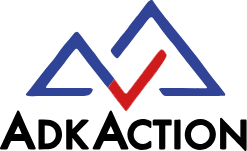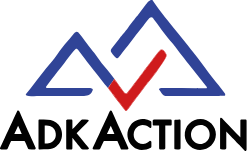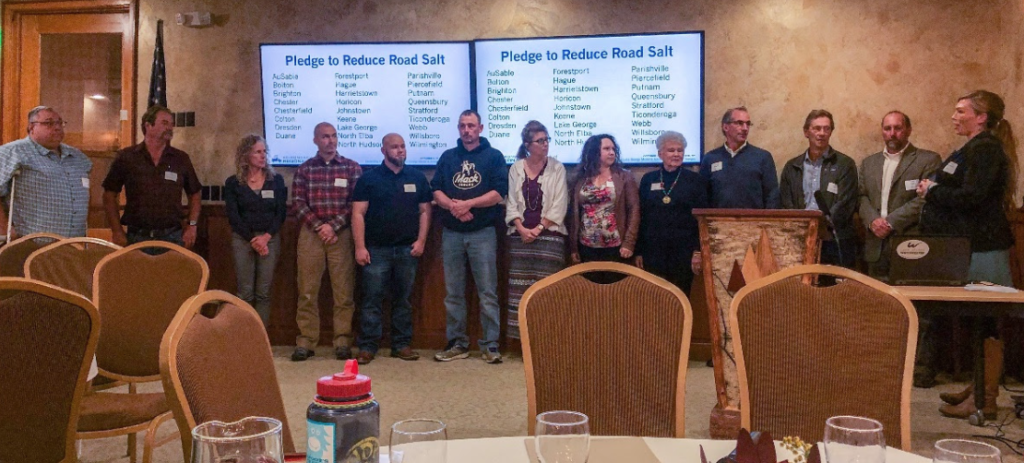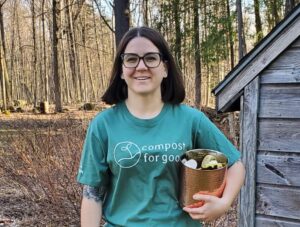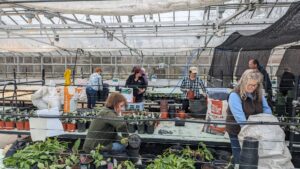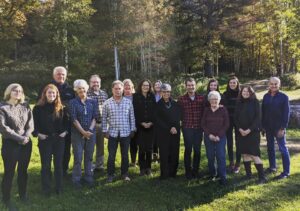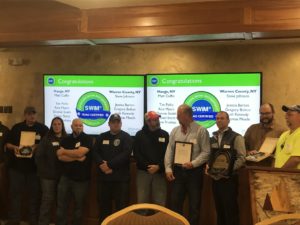 On Thursday, October 3rd, the 5th Adirondack Champlain Regional Salt Summit took place at the Golden Arrow Lakeside Resort in Lake Placid. AdkAction was a co-organizer of the event alongside The FUND for Lake George, the Ausable River Association, and Lake Champlain Sea Grant. This year, the summit drew in more than 150 attendees from across the northeast. There were representatives from many local municipalities, including the Town of Hague, Town of North Elba, Town of Wilmington, Town of Keene, Village of Lake Placid, Town of Jay, and the Town of Lake George. Local business owners, members of the community, representatives from the Governor’s office, the NY State assembly, NY Department of Transportation, NY Department of Environmental Conservation, and NY Department of Health were in attendance as well.
On Thursday, October 3rd, the 5th Adirondack Champlain Regional Salt Summit took place at the Golden Arrow Lakeside Resort in Lake Placid. AdkAction was a co-organizer of the event alongside The FUND for Lake George, the Ausable River Association, and Lake Champlain Sea Grant. This year, the summit drew in more than 150 attendees from across the northeast. There were representatives from many local municipalities, including the Town of Hague, Town of North Elba, Town of Wilmington, Town of Keene, Village of Lake Placid, Town of Jay, and the Town of Lake George. Local business owners, members of the community, representatives from the Governor’s office, the NY State assembly, NY Department of Transportation, NY Department of Environmental Conservation, and NY Department of Health were in attendance as well.
The conference began with a very informative presentation by Brendan Wiltse from the Ausable River Association. He discussed our annual salt usage and how that compares to salt usage throughout the region in years past. Annual salt usage was recorded at 108,000 tons on state roads and 84,700 tons on local roads. That amount of salt would equate to 1 ton per capita in the Adirondacks! Brendan explained that the Ausable River Association has been monitoring salinization in multiple water bodies around the region including Lake Champlain, Lake George, and Mirror Lake. For example, they have seen an increase of three times the amount of salt in Lake George from the year 1980 to 2010. In addition to surface water monitoring, the Ausable River Association has been looking at groundwater salinization as well. It is important to understand that the salt we are putting on our roads is having an impact on our drinking water. AsRA has 30 monitoring stations within our watershed and has found that every stream affected by runoff shows contamination of sodium chloride (road salt).
Looking at the issue on a deeper level, there was an explanation of how this very issue caused major damage to the water infrastructure in Flint, MI. When the drinking water within the pipes has high concentrations of sodium chloride, this corrodes the infrastructure that delivers our drinking water and can lead to heavy metals contaminating the water.
Finally, Brendan shared some impactful information about Mirror Lake. The turnover of Mirror Lake, a natural process in which the water from the bottom of the lake is cycled to the top, has been disrupted by the high concentrations of sodium chloride in the lake. The bottom of Mirror Lake now has very high levels of sodium chloride and low dissolved oxygen, making it very difficult for organisms to survive. When this turnover is disrupted, only the top half of Mirror Lake is able to mix, this leads to higher surface water temperatures in the late summer, an increased risk of toxic algal blooms, and a severely damaged environment for the fish and other animals that live in Mirror Lake. Check out their website to learn more about Mirror Lake.
In conclusion, Brendan from the Ausable River Association shared the sources of this salt contamination and explained how important it is to look at all applicators of salt if we want to see a large decrease in salt usage. This reduction in salt is needed to protect the environment and natural resources in the Adirondacks for many years to come.
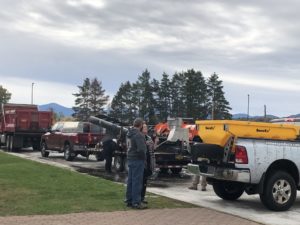 After Brendan, Dan Stec from the NYS Assembly District 114 expressed his concerns and support for taking action on this issue. He then introduced Eric Siy from The FUND for Lake George. Eric explained that Lake George is leading by example and they believe in the power of partnerships, innovation, and investment. In Lake George, they have fitted all of their trucks with tracking equipment to measure application rates, they have engaged in hands-on training and workshops and have invested significantly to make this all happen. Eric said that their goal by 2020 is to provide a best practices model for reducing road salt that can be shared and used throughout the nation.
After Brendan, Dan Stec from the NYS Assembly District 114 expressed his concerns and support for taking action on this issue. He then introduced Eric Siy from The FUND for Lake George. Eric explained that Lake George is leading by example and they believe in the power of partnerships, innovation, and investment. In Lake George, they have fitted all of their trucks with tracking equipment to measure application rates, they have engaged in hands-on training and workshops and have invested significantly to make this all happen. Eric said that their goal by 2020 is to provide a best practices model for reducing road salt that can be shared and used throughout the nation.
Up next, Raquib Omer, Rob Vopleus, Matt Coffin, and Steve Johnson all shared how they are making changes and reducing the amount of road salt applied in municipalities and counties around the region. Some changes that were discussed were more frequent calibrations to the equipment used to apply the road salt so they can get accurate readings and application rates, and investment in “live-edge” plows that are significantly better at scraping away snowpack. Members from the Town of Hague shared that they have reduced the amount of salt they are using from 2200 tons in 2017 to 1700 tons in 2019. This is a $35,000 savings for them in simply salt alone. They continued to share that they have eliminated sand completely, are able to apply salt brine before storm making their operations very proactive. Even with less salt, they have been able to provide even better service around their communities than in years past. After we heard about the incredible things local municipalities are doing to reduce road salt, Phill Sexton awarded the Town of Hague and Warren County with Sustainable Winter Management certifications for their efforts.
After hearing from local governments, Sam Zhou from NYS Department of Transportation gave a presentation on what New York State is doing in the way of Salt Management Initiatives in the Adirondack region. Sam expressed that NY DOT wants to be a part of the solution to reducing road salt contamination. He shared that NY DOT currently reduces road salt by investing in new equipment to accurately disperse the salt, they have been using the practice of brining and pre-wetting their salt to make each application more effective, they calibrate their equipment regularly, and they have been working on driver training. Additionally, Sam explained the 2 most recent projects in the Adirondacks that are implementing slower speed limits in the winter. They have been doing water monitoring in partnerships with NY DEC, DOH, and USGS to evaluate contamination of surface and groundwater throughout the area. There is concern about salt contamination in drinking water wells and that is being handled by their legal department.
After Sam Zhou, a group of sponsors of the summit shared information about various products they offer that may assist in the reduction of road salt usage for municipalities, businesses, and homeowners alike. Demonstrations in the Olympic skating oval included equipment available to aid in the efforts of reducing road salt and some demonstrations of equipment already in use by many towns in the Adirondacks.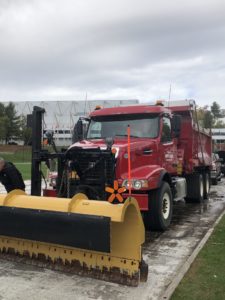
The lunchtime keynote speaker for the day was Frank Lombardo from Weatherworks. Frank showed many graphs and charts of weather data changing over time and explained how these changing weather patterns are having an impact on winter maintenance approaches throughout the region. While we may not have winters that are quite as long, the number of days with significant snowfall is still very high and therefore winter maintenance is very important.
Next, Billy Jones, NYS Assemblyman District 115 ensured that he is working on legislation pertaining to this issue and will make recommendations for NY state to take leadership on this. He then introduced the Executive Director of AdkAction, Brittany Christenson. Brittany gave a great presentation focused on how AdkAction is taking a regional approach to this issue and is working to engage leaders around the entire Adirondack Park. She explained that AdkAction has sent a memorandum of understanding pledge to reduce road salt around to every municipality in the Adirondacks, to engage their support and action on this issue. At the conference, AdkAction recognized the municipalities in attendance who had signed the MOU.
The following municipalities have signed the pledge to reduce road salt:
Ausable, Bolton, Brighton, Chester, Chesterfield, Colton, Dresden, Duane, Forestport, Hague, Harrietstown, Horicon, Johnstown, Keene, Lake George, North Elba, North Hudson, Parishville, Piercefield, Putnam, Queensbury, Stratford, Ticonderoga, Webb, Willsboro, Wilmington
To conclude the day, there were two concurrent sessions–one on Municipal Implementation of Best Practices, and a Business/Private Contactor Panel Discussion on implementing solutions on business properties. All in all, the 5th Adirondack Champlain Regional Salt Summit was a huge success, and wonderful day of education on the importance of reducing road salt throughout the region and protecting our rivers, lakes, and drinking water.
You can view the entire summit agenda here.
